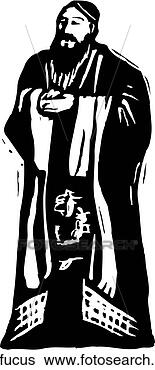Today's posting is the second writing in a series by action researcher,
Dr. Stephen Kroeger, introducing some of his experiences from a recent trip to Palestine to begin action research with school teachers there. Steve's first post
(August 17, 2010) began with a scene at the turnstile gates of the Hebron Market. Here in this market area the Isaraeli's and Palestinians may live closely together, but the divide continues to be great as Steve describes with his art and words.
The words and art below are Steve's and both are used with permission. If you have comments or questions, please feel free to leave them! If you have an idea for or would like to write a response to any of educational action research topics you read here, please email me at: Dusty.Embury@EKU.edu. Peace, Dusty
© 2010, Original art work by Stephen D. Kroeger, used with permission
This is a second installment about my recent visit to the West Bank (July 2010). On one end of the Hebron market place were the turn stile gates (
see August 17th Blog). At the other end of the market was this scene. A gentleman, a Muslim, approached a group of us and explained that this was once one of the largest markets in the West Bank and Gaza Strip. It used to be a big and open area just behind the wall. “There were a lot of shops. They shut it down. They built a settlement, and if you see these two floors you can tell the old building from the new building. They built another floor on top which is not their property. If you stretch a little bit down here I am going to show you the door or the exit, a small channel, it used to take us to the other market. It used to be so active down here, one of the best markets in the whole West Bank and Gaza Strip.”
The man moves a bit further down and invited us to come with him to see a sealed up passage way. Our guide asked if we needed to depart. She explained to the man that she had been here before. The man replies, “I know love, I just want to show him and to show you. Even Europeans on Saturday, they come here and the do a big demonstration, asking them (the settlers) to leave the area. They (the settlers) thrown eggs on my stuff. I’m gonna’ show you a lot of shells, as a witness; I’m not going to sell them to friends like you, people who are on our side, who are supporting us. It just a little bit.”
“My shop is in the corner here. You won’t walk more than 20 meters.” As we walk further into the market we pass under the fencing that is acting as a net. A member of our group asked, “Is that garbage?” In the nets above us, were piles of rotting garbage that had been thrown out of the settlers windows above.
“Yes, but let me show you this small channel.” The man pointed to a concrete sealed doorway. “They blocked it with concrete. You can tell. It used to take us to the other market.” Then pointing as if we could see through the concrete with our imaginations he continued, “And on our right hand side, when I used to be a little kid, I used to go up to these two floors on the stairs just behind the shops. If you step here,” the man moves a few steps further into the market, “The Israeli army is protecting them (the settlers) in the tower day and night, 24 hours.” Walking a few more steps further he says, “If you stand here, you can see another tower on the other side. And here are the eggs as a witness.”
Turning to look at our guide he says, “Honestly, I swear on my life, I am telling you the truth. The other day, during a demonstration of the Europeans, they (the settlers) were throwing eggs on my stuff.” Reaching up he pulled his textile back to show us the egg stains on his materials. “I am not selling the stuff, but keeping them to show them to the people who care about us. The way they treat us, they treat us like a bunch of animals, not like human beings at all, not a kind of respect. They are trying hard, in a way, to kick us outside here. We are determined to stay. We are not going to give up as long as we live because this is our homeland.”
What was this gentleman trying to help us understand? The Palestinian economy is being strangled by the heavy restrictions placed on the markets and people’s physical movement. All movement is under surveillance. Movement is controlled through multiple check points. We were unable to see what was happening. What we saw had to be interpreted and explained. Violence is woven into the fabric of the culture and life of the people – violence is rooted in the claims on the land.
What do I want you to know from this experience? Something profoundly unjust is occurring. These occurrences are partially funded by our tax dollars. Simply learning more about this situation is an act of resistance. We are linked to these experiences.







